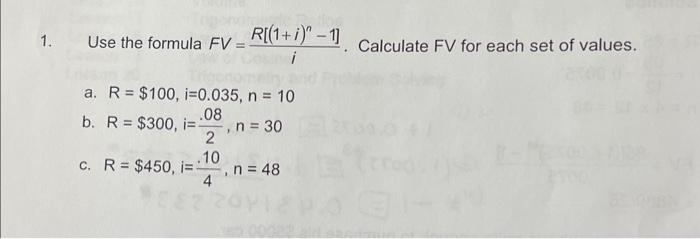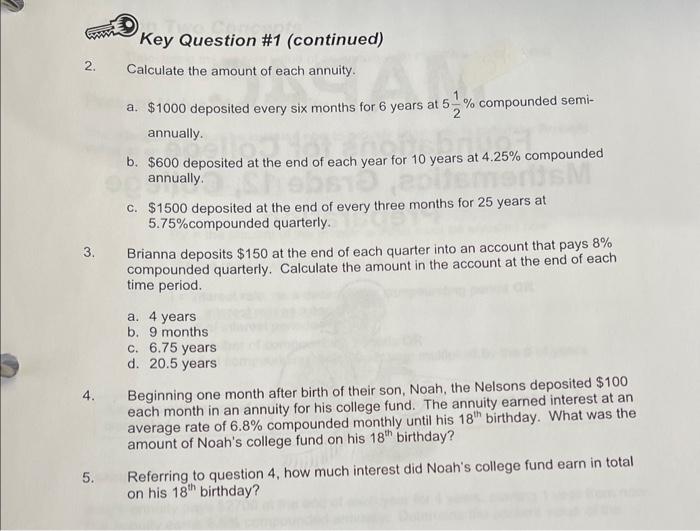Answered step by step
Verified Expert Solution
Question
1 Approved Answer
1. Use the formula FV = R[(1 + i)^-1] a. R = $100, i=0.035, n = 10 .08 b. R = $300, i, n


1. Use the formula FV = R[(1 + i)^-1] a. R = $100, i=0.035, n = 10 .08 b. R = $300, i, n = 30 2 .10 c. R = $450, i=, n = 48 Calculate FV for each set of values. 2. 3. D 5. Key Question #1 (continued) Calculate the amount of each annuity. a. $1000 deposited every six months for 6 years at 5-% compounded semi- annually. at the end of each y b. $600 deposited at the end of each year for 10 years annually. at 10 years at 4.25% 4.25% compounded eolismenisM c. $1500 deposited at the end of every three months for 25 years at 5.75%compounded quarterly. Brianna deposits $150 at the end of each quarter into an account that pays 8% compounded quarterly. Calculate the amount in the account at the end of each time period. a. 4 years b. 9 months c. 6.75 years d. 20.5 years 4. Beginning one month after birth of their son, Noah, the Nelsons deposited $100 each month in an annuity for his college fund. The annuity earned interest at an average rate of 6.8% compounded monthly until his 18th birthday. What was the amount of Noah's college fund on his 18th birthday? Referring to question 4, how much interest did Noah's college fund earn in total on his 18th birthday?
Step by Step Solution
★★★★★
3.44 Rating (160 Votes )
There are 3 Steps involved in it
Step: 1

Get Instant Access to Expert-Tailored Solutions
See step-by-step solutions with expert insights and AI powered tools for academic success
Step: 2

Step: 3

Ace Your Homework with AI
Get the answers you need in no time with our AI-driven, step-by-step assistance
Get Started


